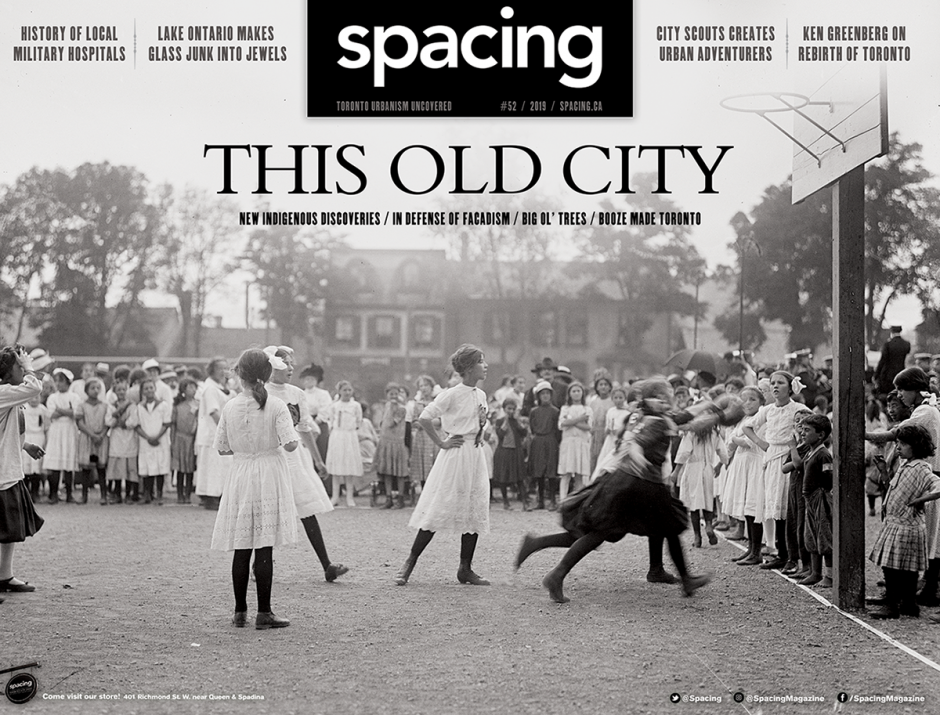
This Old City
In this edition of Spacing, we examine what is truly old in this city. Old can mean different things: when is infrastructure too old that it needs replacing? When does a building deserve heritage protection? How old is Toronto — old, as in ‘it was founded 1792’-old, or as in ‘this area has had humans inhabiting it for 12,000 years’-old?
Apart from all the debates over what makes something old in Toronto, one point is undeniable: the old objects in cities remind us that urban spaces exist in four dimensions — the three we can all see and touch; but also time, which acts relentlessly on urban spaces, sometimes glacially and in other instances like a hurricane. Either way, we need to be aware of time’s hand, because it reveals why our cities are the way they are. The old explains the new, and thus hints at what is yet to come.
Also inside this issue: photos documenting the nearly 100 years of sewer covers; a modern transit-style map of Toronto streetcar routes in 1932; Toronto’s recycling woes; What happens when nature creates jewels out of human castoffs.
cover photo courtesy of City of Toronto Archives
fonds 200, series 372, sub-series 52, item 70
